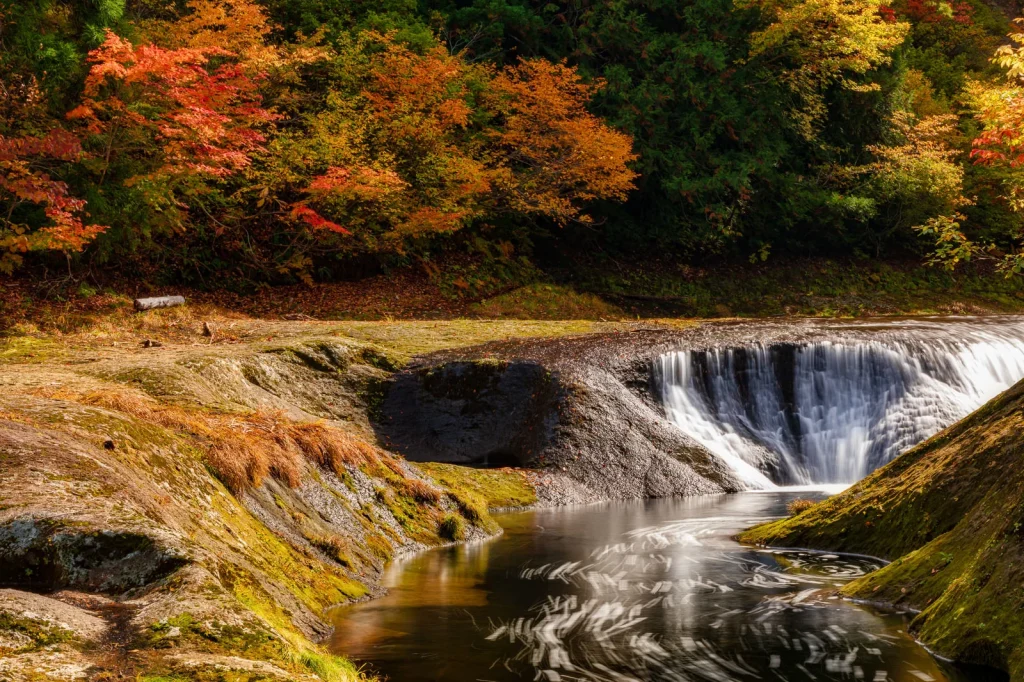Nestled in the northern Tohoku region of Japan, Akita Prefecture unfolds like a hidden tapestry of natural wonders, cultural richness, and gastronomic delights.
From the captivating beauty of its landscapes to the vibrant festivals that echo through centuries of tradition, Akita offers a unique and immersive experience for travelers.
In this extensive guide, we will embark on a detailed journey through Akita, uncovering specific attractions, delectable cuisines, and the distinctive charm that defines this prefecture.
Allure of Akita Prefecture

- Kakunodate Samurai District: Preserving Feudal Heritage: Kakunodate stands as a living testament to Japan’s feudal past, boasting well-preserved samurai residences along its charming streets. The Kakunodate Samurai District allows visitors to step back in time, exploring traditional homes, museums, and cherry tree-lined avenues. The annual Cherry Blossom Festival in spring paints the town in hues of pink, creating a serene and picturesque atmosphere.
- Tazawa Lake: Japan’s Deepest Lake and Scenic Beauty: Tazawa Lake, Japan’s deepest lake, is a serene oasis surrounded by verdant hills. Boat cruises on the lake offer breathtaking views, especially during the autumn season when the foliage transforms the landscape into a canvas of vibrant colors. The lakeside Tatsuko statue and the mysterious legend associated with it add an intriguing element to the visit.
- Nyuto Onsen: Tranquil Hot Springs Amidst Nature: Nyuto Onsen, a collection of hot spring resorts nestled in the mountains, provides a serene retreat for relaxation. Surrounded by dense forests, each ryokan offers its unique charm, from open-air baths with panoramic views to traditional thatched-roof architecture. The changing seasons bring their own magic to Nyuto Onsen, making it a year-round haven for those seeking tranquility.
- Namahage: Ancient Traditions Come to Life: The Namahage Sedo Festival in Oga showcases one of Akita’s most iconic cultural traditions. Men dressed as Namahage demons visit homes, seeking out laziness and mischief, providing a unique and spirited performance. The Oga Namahage Museum delves into the history and significance of this age-old tradition, allowing visitors to immerse themselves in the folklore of Akita.
- Akita Kanto Festival: A Symphony of Lanterns: The Akita Kanto Festival, held in August, transforms the night sky into a mesmerizing display of lanterns. Performers balance long bamboo poles adorned with multiple paper lanterns, creating a captivating spectacle. The festival not only showcases incredible feats of skill but also celebrates the region’s agricultural prosperity.
- Kiritanpo: Akita’s Savory Soul Food: Akita is renowned for its unique culinary delights, and at the forefront is Kiritanpo. This local specialty features seasoned rice pounded and molded onto a skewer, grilled to perfection. Kiritanpo Nabe, a hot pot dish, allows visitors to savor this delicacy along with seasonal vegetables and locally sourced ingredients.In addition to Kiritanpo, Akita’s cuisine boasts Hinai-jidori, a free-range chicken breed celebrated for its tender meat. Hinai-jidori Yakitori, skewered and grilled, is a popular choice for those seeking a taste of authentic Akita flavors.
- Odate Magewappa: Traditional Craftsmanship in Wood: Odate City is renowned for its Magewappa, traditional wooden craftware made from cedar. Visitors can explore workshops and witness artisans skillfully crafting bento boxes, trays, and utensils using traditional techniques. The Odate Magewappa Craft Museum offers a deeper understanding of this art form’s history and significance in Akita’s culture.
- Akita’s Coastal Beauty: Akita’s coastline offers picturesque landscapes and unique attractions. Jodogahama Beach, known for its pristine white pebbles and clear blue waters, provides a tranquil setting for relaxation. The dramatic cliffs and rock formations add to the coastal allure, making it a must-visit destination for nature lovers.
- Kazuno Akita Prefectural Folk Performing Arts Center: This cultural center in Kazuno City showcases the region’s traditional performing arts, including Tsugaru shamisen music, Tsugaru-jamisen playing, and local dance forms. Visitors can enjoy live performances, participate in workshops, and gain a deeper appreciation for the cultural heritage of Akita.
Conclusion:
Akita Prefecture, with its enchanting blend of historical richness, natural wonders, vibrant festivals, and delectable cuisine, emerges as a destination that invites exploration and discovery.
From the timeless elegance of Kakunodate to the lively lantern-filled skies of the Akita Kanto Festival, each corner of Akita unveils a unique facet of Japan’s cultural and natural heritage.
As you savor the flavors of Kiritanpo and soak in the rejuvenating waters of Nyuto Onsen, Akita promises an unforgettable journey that resonates with the soul and leaves an indelible mark on the traveler’s heart.



コメント